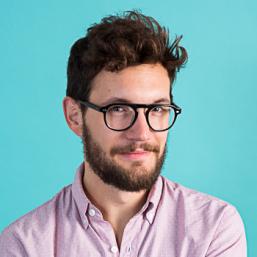
Sit down and relax
Is this image of the Dutch – stubborn about sticking to their old ways – correct? Do Americans and Australians really understand coffee so much better? Indeed, just look at the way Jeff prepares his next cup: freshly grinding 18 grams of carefully weighed out beans and pouring it into a pre-heated cup. This coffee is made with more attention than the average Dutch ‘brown café’ will ever make one.
But can we distill new coffee habits down to nationalities? Lying on the bar is a copy of Drift magazine, the brand new glossy on worldwide coffee culture that focuses on a different world city every issue. This one is about Tokyo. Famous Japanese Instagram photographer Hiroaki Fukuda explains that the Japanese are different from New Yorkers, ‘because they don’t take coffee on the go, but sit down and relax for a few hours.’ Something similar is being said by Matija, barista at Cogito Coffee Roasters in Zagreb, Croatia: ‘Croatians don’t drink coffee on the go while running to work. Instead, at eleven o’clock, they leave the office, sit down, relax and take their time to enjoy a cup of freshly brewed filter coffee.’
In comparing these statements about different countries’ coffee cultures, you might note that each seems to claim their way of drinking coffee to be unique. But they can’t all be unique at the same time in the same way, can they? Take Jeff, for instance, who said the Dutch were inspired by the coffee culture in cities like New York. Then there’s Fukuda the photographer who contrasts New Yorkers with the Japanese. Matija then uses the Croatians as an example, claiming they are very different from the rest of the coffee drinking world. If they all refer to the same way of enjoying coffee, enjoying an artisanal product in a relaxed way, can we really say there’s a clash of national coffee cultures? And if it isn’t about a nation’s coffee culture, then from whence does the culture come?
Not just coffee places
A lady with a felt hat sits next to a young man with long blond hair and a bushy beard. Together, they scroll through a Google agenda on his MacBook. On a table in the back, some young men are having a discussion over their paper- work. A familiar scene, all of it. ‘Sixty percent of my guests are from the neighbourhood,’ Jeff says. ‘They live around here. And many work here, mostly at the Brouwersgracht. They’re freelancers, creatives, writers. They come here to relax, or to get some work done.’ For Jan Rath, professor of Urban Sociology at the UvA, the rise of the artisanal coffee bar is not so much related to nationa- lity or the influence of coffee cultures abroad. He believes that Amsterdam’s economy has changed, and its coffee culture with it. ‘The explosive growth of coffee bars’, he explains, ‘is due to the rise of the creative sector.
Creatives move to the city center of Amsterdam and so the infrastructure adapts to them.’ Manufacturing industries, Rath says, have disappeared. Instead, there has been a rise of high quality services, like the espresso bar, microbreweries and spelt bakeries. ‘The fact that everybody speaks English is because Amsterdam is an amazingly international city. Everybody speaks English everywhere. It’s not just the coffee places,’ he concludes.
Daydream
It shouldn’t come as a surprise that Jeff is part of the creative class himself: after all, he has a big beard, studied Brand Marketing at the UvA, and worked in the advertising industry for eight years. ‘I went out to have a cup of coffee every morning before work,’ Jeff explains. ‘When I’d go home, I passed by a café to drink a locally brewed beer. And then I thought, if I like this way of living so much, why not make a business out of it?’ Jeff buys his beans at his favorite coffee roastery in Berlin. He bought the couch from a designer in Los Angeles and the cups in London from the New-Zealand brand Acme. ‘I order tea from a store I once visited in Brooklyn,’ he says. ‘All these things coming together give me that Sunday feeling. And that’s what I want my guests to have as well, so they can daydream a little.’
A man with Woody Allen glasses walks up to the counter and asks for another espresso. ‘Sure,’ Jeff says. The man in the glasses nods, walks back to the couch and bends over the New York Times International Edition. He is definitely having some fika time. In English.

